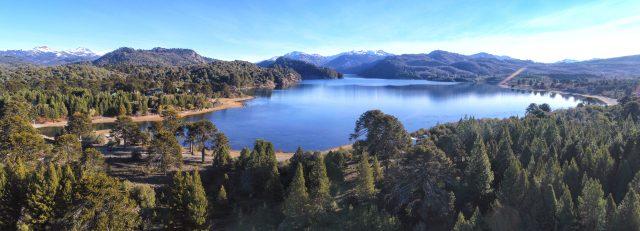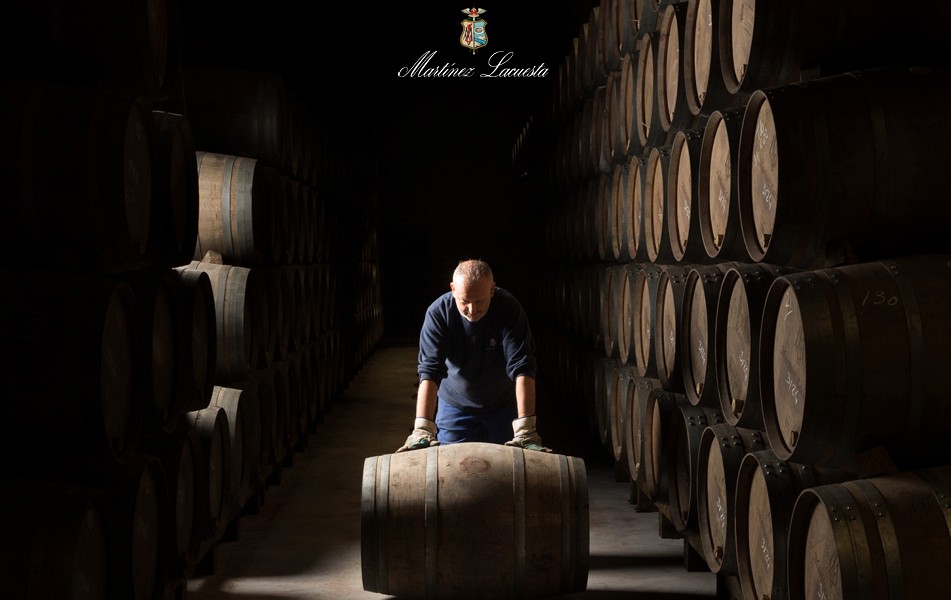The oenophile’s guide to visiting Argentina
Visiting a selection of wineries while touring Argentina has become a crucial part of understanding the country’s symbiosis with its unique environment as well as its heritage.

One path in particular makes the journey seamlessly straightforward – a winding road that just happens to be the longest and most picturesque: Ruta 40, or RN40 as it is sometimes known, is the one to note.
Ruta 40, which runs parallel to the Andes, doesn’t just showcase Argentina’s stunning landscape, but it is a top attraction for wine lovers, adventurers and nature enthusiasts. Thanks to the wineries, national parks, rivers and mountains that feature along the route and just off of the main road, many people travelling along it consider Ruta 40 as a fundamental part of the Argentinian tourism experience and an effective way to show how much the country has to offer in terms of its viticulture.
For oenophiles travelling up from the south, Patagonia is almost certainly on their radar. Bodega Malma CEO and president of the Patagonia Chamber Ana Viola says that many people have heard about Patagonia, but completely ignore where it is, but once explored, grow a genuine passion for the geographical region that stretches for many kilometres across the southern provinces of Argentina. It was created by law in 1878 and it is the only region in the world to bear that name in official documents.
It is a very vast region, characterised for its extension and scarce population. It is mostly flat, but it also has mountains, forests, great lakes and rivers, miles and miles of ocean shore, fertile valleys, it is a feast of natural resources.
Amongst the treasures of Patagonia are the small wine producing valleys, all of them irrigated by rivers that flow from the Andes, windswept, with great conditions for growing grapes for making unique wines.
According to Viola: “The importance of the brand Patagonia strives in its ability to convey the message of precisely what it is: a far away place, where you can still find traces from the past – dinosaur fossils, arrow points and paintings in caves. We aim to keep it that way – rustic, untamed and not a part of a marketing strategy.”
For anyone using RN40 and looking for authenticity and an area of great history, Patagonia is the place. As Viola reasserts, the heritage of the area is something to be revered and upheld, stating: “For us, wine producers from this region, who know the struggles of producing grapes, elaborating wines and being able to sell those wines around the world, doing so from so far away, our origin is everything, and we are so few and so small that any misuse of the brand Patagonia could be a great prejudice for us and the niche we have created.”
Moving towards Mendoza, Penedo Borges Bodega Boutique, which was certified by B Corp in 2017, is located in Agrelo, Luján de Cuyo with an impressive view of the Andes mountains as a backdrop, and is very close to the route and just 20 minutes from the heart of the city. With an elaboration of 190,000 litres per year, it focuses all its production on high-end wines, which are not to be missed.
The winery has a strong commitment to the calibre of its wines, working with manual and artisanal techniques, but with the latest technology, it guarantees quality. In addition, with a strong commitment to wine-tourism, Penedo Borges offers a wide range of wine-gastronomic options for people who adore treating their taste buds and these range from lunches with suggested pairings, visits as well as tastings or more relaxed picnics in the gardens of the winery. Everything is tailored to meet the needs of the visiting wine buff and epicurean.
Penedo Borges has an ethos that encompasses economic, social and environmental factors and its endeavours continue to be “reflected not only in its activities, but also in the values and philosophy of the company. As a company that cares, sustainability for the winery is about more than its landscape, but also considers wellbeing and, as such, aims to “transmit” this philosophy to those who visit.
Anaia Wines spokesperson Patricia Serizola explains how its new eco-tourism project in Agrelo Luján de Cuyo is taking shape. Speaking of the project, she identifies how the winery’s main three values are to show “respect for nature, technology and innovation’ and reveals how she has built a winery “embedded in the landscape of the Andes Mountains” that has three water reservoirs to optimise the use of water and uses drip irrigation to minimise water waste. Additionally, at Anaia, the whole winery rooftop is covered with solar panels to profit from the sun’s clean and renewable energy.
Serizola points out that, architecturally, “the building replicates the most prominent peaks so they are aligned with the construction and reflected in the water lagoon” so that “the building emerges from the land as if it was produced by a collision of tectonic plates” and the “colours and texture of the walls simulate different geological layers” so that the entire winery is in harmony with the land. She reveals: “We successfully created a magic and appealing site for tourism to melt with nature” and adds that this is also very closely linked to the winery showing it has a “responsibility to the environment”.
Partner Content
Sites along Ruta 40 are reflected in the land too, with the Cueva de las Manos, which contains cave art dating back 13,000 years and the Los Glaciares National Park as well as the Calchaquí Valleys nearby in all their beauty. It crosses the provinces of Santa Cruz, Chubut, Río Negro, Neuquen, Mendoza, San Juan, La Rioja, Catamarca, Tucumán, Salta, and Jujuy and, as anyone who travels through it can see, it is a feast for the senses. While the thread of sustainability runs through most of the wineries, it is truly because of the area that all of this is obtainable.
The Andes is an interesting area in terms of sustainability, where no pesticides are used and fresh water from the mountains naturally irrigates many of the vines. There are also few people living near the mountainous vineyards which means much less human pollution and so, as such, many of the wines along Ruta 40 benefit from the uniqueness of the environment.
Moving towards San Juan, places like Bodega Huanacahe have a lot to offer. Huanacahe has a sustainable project linked to the indigenous cultures and art of San Juan and the tourism area is already in planning and ready to be developed, it is estimated to be ready by 2024 giving the winery yet another boost and a way to show the world what it does best.
Matias Prezioso president at Asociación Argentina de Sommeliers, who is also in charge of the export strategy at the winery, believes the area of “San Juan has grown a lot in the last five years”.
“In addition, very interesting wines have emerged from valleys such as Calingasta, where there are local producers installed there and also wineries from other regions of the province that buy grapes. San Juan has wonderful landscapes, it is close to Mendoza for many wine tourists and trade people, and I believe that in the next five years there will be a great development in the area of wine tourism,” says Prezioso. Here, he observes how “there are wineries like Xumek, near the city, that are building the winery and preparing the visit to tourism, as well as others in Barreal where there are very nice hotels like Posada Paso de los Patos when you visit producers like Cara Sur, Los Dragones and others” all of which help in terms of wine tourism.
Sergio Mora Viera, CEO of the Huanacache points out that what he sees is that the recognition of the Pedernal Valley as a premium grape growing area is increasing and reveals that “here, there are first class wineries that have developed their own estates. So far,there is only one winery established, which is a ‘garage’ winery, that of Santiago Graffigna” which “also has a very nice inn” where visitors can stay too – all of which helps encourage more people to consider the area as part of a wine tour.
According to Mora Viera, Valle de Zonda is a reference for its history and it is a place where it is already more developed to be able to sleep or eat in places like La Coqueta. Additionally, he observes how “the proximity to the Punta Negra and Ullum dams also gives it an additional attraction, since many farms are irrigated with the waters of these dams, especially Punta Negra”.
Added to this, those travelling through Ruta 40 have other areas they can now stop by to see how winery development is taking place. For instance, the Calingasta Valley is a place that is slowly growing in terms of winemaking, and there are several new projects, whether in Barreal, Sorocachense, Tamberías, or Calingasta itself. Mora Viera reiterates how “there are four or five small wineries” oenophiles can visit, plus the area “has all the infrastructure of Barreal which is famous for its observatory of Pampa del Leoncito, the carrovelismo” which is also popular with tourists who are new to the area and sightseeing while on their travels.
Further into the north, as the road climbs and winds upwards, there are must-visit stops on the way that showcase the rarity of the terroir. “Ruta 40 and the Quebrada de Humahuaca are fundamental on the wine circuit,” says Bodega Tukma owner Adriana Mattarollo, name-checking each of the sub-regions along the route known for the viticulture such as Tolombon, Cafayate, Cachi, Molinos and Tacuil.
What makes Argentinian wine along the Salta province unique, according to Mattarollo, is the dry and temperate weather, the sandy soils and the age of the vineyards. She observes: “In the valleys we have the thickest and oldest arboreal trunks of vines in South America, which all contribute to making the exceptional high altitude wines of Salta. These wines are concentrated with more aroma and colour than many in other regions and this accentuates their quality.” This, she explains, “has helped such wineries forge their own character and style for the area”.
The winegrowing zone in Jujuy, which goes through Tumbaya, Purmamarca, Maimara, Tilcara, Huacalera, Yacoraite towns, can be found on the route nine in the Quebrada de Humahuaca region, which was declared cultural and natural heritage of humanity by the UNESCO in 2003. The height of the vineyards are extreme and, as Mattarollo points out, “there is a big thermal amplitude – a factor that adds to the uniqueness of the soil due to its exposure to the sun”. All of this, she identifies as being helpful towards creating extremely complex aromatic wines.
Essentially, what differentiates the Quebrada de Humahuaca from other places, is the weather – a factor that is totally different from the climate in the Valles Cachaquíes – colder and with strong winds play their part here. The higher the altitude, the greater the climatic difference as the vineyards range from 2,000 metres high to 3,300 metres above sea level. Mattarollo identifies how so many elements help to make the wines so sought after. “The sun, the limitations of the cultivable areas of the Quebrada, the great diversity of the soil, the different vineyards and the people who work the land” explaining how local producers are excellent farmers and have been working the land for several generations. All of this defines the Quebrada de Humahuaca as a terroir with great potential to produce wines with an expression of the place. As such, it is a memorable place to visit and fascinates those who venture there.
Related news
Castel Group leadership coup escalates
For the twelfth day of Christmas...
Zuccardi Valle de Uco: textured, unique and revolutionary wines




